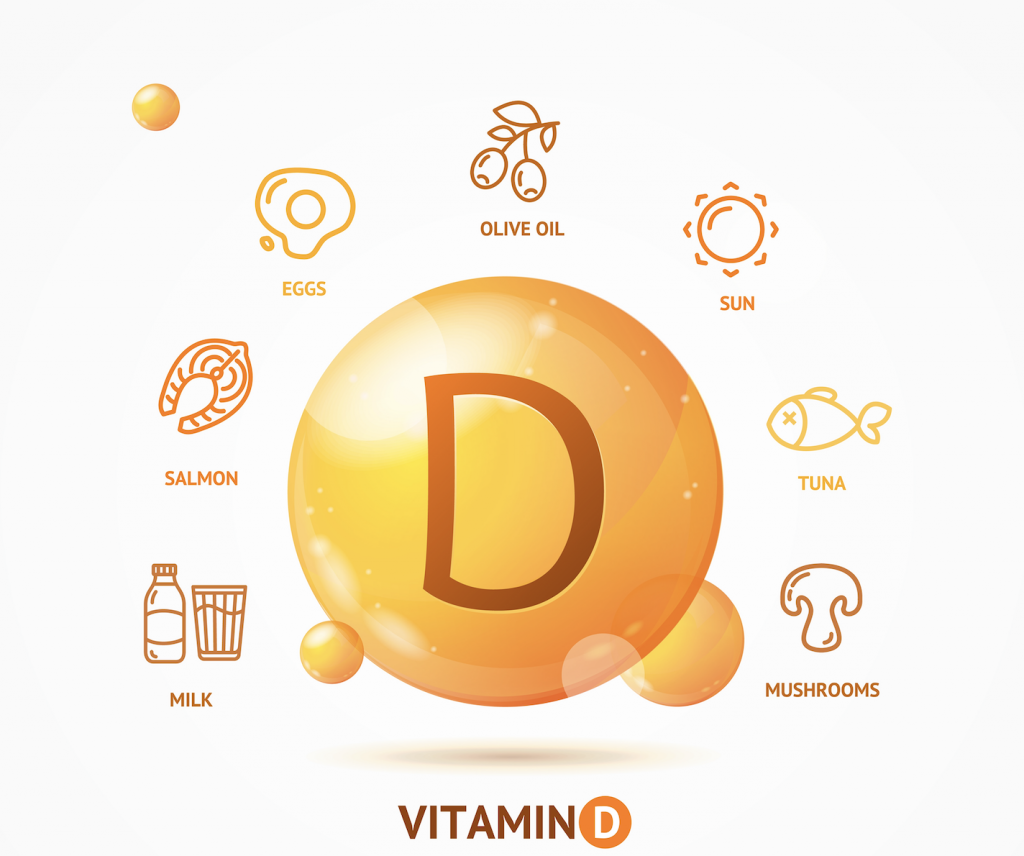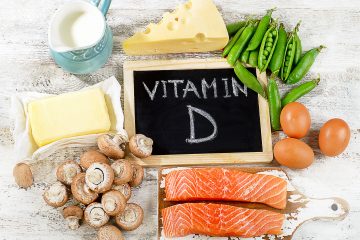What Athletes Should Know About Vitamin D

Vitamin D for Athletes
“You should take a Vitamin D supplement.”
Chances are you’ve heard this advice. Vitamin D currently is one of the most widely talked about nutrients in the sports world. Vitamin D seems to be the answer to everything lately, from bone health to optimizing testosterone production.
But what do the data say about Vitamin D for athletes? This blog post tackles the confusion surrounding Vitamin D in the sports world. And it will look at what aspects of athletic performance you can optimize by achieving “ideal” Vitamin D status.
Are Athletes Vitamin D Deficient?
Experts debate what constitutes a true Vitamin D “deficiency.”
The NASEM and National Academy of Medicine cite that levels under 30 ng/mL are associated with Vitamin D deficiency, and levels between 30-50 ng/mL might constitute Vitamin D insufficiency. But these numbers are based on the general population.
The Institute of Medicine (IoM) is another place that folks often look for guidance, but this isn’t a good benchmark for athletes. IoM developed their guidelines for the estimated average requirement based on Vitamin D’s role in bone health. This ignores the multitude of other roles Vitamin D plays in an athlete’s body. Moreover, the correlation between a type of Vitamin D (25[OH]D) and bone health are terribly misleading.
But chances are you don’t care about the general population, or the form of Vitamin D the IoM measured (there are several different types in the body). You just want to know what to do to perform and feel your best.
So what about athletes?
There is moderate to strong evidence showing that athletes are prone to Vitamin D deficiency.
Researchers believe that athletes should target Vitamin D levels over 40 or even 50 ng/mL. At Athlete Blood Test, we use 50 as our benchmark to reduce the risk of deficiency if an athlete is between the 30 to 50 ng/mL range. Unlike other biomarkers, Vitamin D reference ranges are typically similar across age, sex and sport.
Out of 882 recently tested athletes with ABT, 73% had levels of Vitamin D under 50 and 21% had levels under 30. But only 4% had levels under 20. Many of the athletes sampled were taking a Vitamin D supplement at the time of their blood draw.
Can Athletes Get Enough Vitamin D From Food?
The short answer: probably not.
First off, there are only a handful of foods that contain Vitamin D, including egg, yolks, milk, yogurt, and salmon. Plant based sources?
Fun fact #1: Mushrooms are the only plant source of Vitamin D.
Fun fact #2: Mushrooms can store Vitamin D if they are exposed to UV light.
Some athletes put their mushrooms outside to sit in the sun to boost Vitamin D content. Research shows it’s actually quite effective.
But even if you eat Vitamin D-rich foods, they only contribute to about 10% of your Vitamin D. Athletes need sunshine and at times, probably supplements, to get sufficient amounts.
What About Supplements?
Many factors affect your Vitamin D status, such as nutrition, sunlight exposure, and genetics. Whether you should supplement depends on the Vitamin D concentration in your blood. If you have optimal Vitamin D levels, taking Vitamin D likely will not provide an athletic advantage.
It’s never advisable to supplement blindly, so get your Vitamin D level checked before you supplement. Keep reading for some tips on how to maximize the benefit of Vitamin D supplements.
How Vitamin D May Help Athletes
Let’s break down the current evidence on Vitamin D and athletic performance. Outside and Alex Hutchinson of Sweat Science did a great job in this article citing two newer studies that may show benefit to athletes. Below we summarize recent review articles on the current research involving Vitamin D and athletic performance.
Muscle Repair and Remodeling
The whole point of training is to provide a stimulus that disrupts your body’s status quo (homeostasis) that elicits an adaptive response that improves performance. That is, you get strong, faster, and more efficient.
Therefore, as an athlete, you want to maximize the training stimulus and have a nutritional strategy to complement an adaptive response. While the research is primarily on animal models and in vitro studies (think test tube), data have emerged suggesting a beneficial role for Vitamin D in muscle repair and remodeling. In a randomized controlled trial (a high-quality study), the results showed that supplemental Vitamin D to achieve a concentration above 75 nmol-1 had a positive effect on the recovery of force following a bout of damaging eccentric exercise (think weight lifting or running downhill).
Conclusion: Research on the role of Vitamin D in muscle recovery is promising, but we still need more human trials to get better recommendations.
Muscle Function
Most of the research done on Vitamin D is not done on athletes. This is important because, as an athlete, your body is physiologically different. Also, marginal gains may not matter when it comes to basic health. Marginal gains definitely matter when it comes to performance. Most of the glorious news about Vitamin D and muscle function is derived from elderly populations. Great news for your parents or grandparents, but it may be overinflating the benefits when it comes to young-ish athletes. It’s also possible that Vitamin D deficiency negatively impacts muscle function, but we don’t have data coupling cases of severe deficiency with muscle function in elite athletes.
When you look at the totality of the data, we can’t yet say that Vitamin D plays a role in muscle function capacity in athletes.
Immunity
Vitamin D has gotten some press about playing an important role in immunity. Circulating Vitamin D activates immune cells and upregulates gene expression of broad-spectrum antimicrobial peptides, which are important regulators of immunity. In one study of college athletes, Vitamin D concentrations over the winter and spring were negatively correlated with documented frequency of colds (upper respiratory tract infections). Other studies have found similar results, showing that athletes with the highest Vitamin D concentrations (at or above 95 mmol-1) had one or fewer bouts of illness and the fewest symptoms. Athletes with the lowest Vitamin D levels had higher symptom-severity scores and were sick for longer. This effect has been replicated in randomized controlled trials, with the placebo group having worse respiratory symptoms.
Current data on Vitamin D’s benefits to the immune system is promising.
In a previous post we discussed whether Vitamin D can reduce the risk of COVID-19.
Vitamin D and Heart Function
Fun fact- your heart has Vitamin D receptors and also has the ability to make a form of Vitamin D. Research has shown that Vitamin D deficiency may negatively affect heart function. However, when it comes to evidence of a relationship between Vitamin D and cardiac function, few studies have examined healthy athletes.
Athletes are often deficient in Vitamin D, and many more have suboptimal levels. One lab observed Vitamin D deficient athlete’s hearts were significantly smaller than those of suboptimal and sufficient Vitamin D levels.
There may also be Vitamin-D-dependent heart-protective mechanisms.
Conclusion: The relationship between Vitamin D and heart function remains highly controversial, especially in athletic populations. Very few studies have examined the association between Vitamin D status and heart structure and function in healthy athletes.
Bone Health and Fracture Risk
Optimal concentrations of Vitamin D for the best possible skeletal health are still debated. Observational studies have shown inconsistent associations between bone mineral density (BMD) and Vitamin D status. We need more genetic studies to investigate the direct actions of Vitamin D on a type of bone cell called osteoblasts. Cyclists and other non-weight-bearing athletes are at particularly high risk for decreased BMD because weight-bearing helps to improve BMD. Athletes in the general population are at risk for lower vitamin D levels. Other studies have shown that vitamin D3 supplements can reduce stress fracture in athletic populations but cite that further research is needed.
Emerging evidence suggests that Vitamin D3 Supplements can reduce the risk of stress fractures in the athletic population, but the overall data show inconsistent findings.
Too Much of a Good Thing?
Many athletes make the mistake of applying economic principles to nutrients. More is NOT necessarily better when it comes to nutrients. Levels of Vitamin D above 180 nmol-1 may be toxic. In one study of athletes, the higher dose of Vitamin D (70,000 IU per week) actually caused vitamin D levels to go lower.
Vitamin D Supplements for Athletes
Not all Vitamin D supplements are created equal. We recently discussed Vitamin D2 vs D3, which you can read more about here. In short, we recommend Vitamin D3.e.
There are three keys to optimizing Vitamin D absorption.
- Make sure to take your Vitamin D3 away from the fat-soluble vitamins A and E
- Vitamin D should be taken with vitamin K2 (also fat-soluble) because D increases calcium levels in the body and K helps the body use the calcium by shuttling it to your bones.
- Take it with at least 7g of fat; this is equivalent to 1 Tbs of nut butter, two thumbs worth of nuts,1 oz of cheese, or ¼ avocado.
- Take it in the morning. Taking Vitamin D in the evening can disrupt your sleep. Vitamin D is naturally made in your body when it’s exposed to sunlight, so if your body senses Vitamin D, your body thinks it must be daytime and therefore disrupts your natural sleep rhythm.
Here are some companies with Vitamin D supplements that we recommend (we have no affiliation)
- Douglas Labs Vitamin D
- Nature Made -they are verified by United States Pharmacopeia (USP), an independent organization that ensures that supplements meet strict guidelines for safety and quality
- Pure Vitamin D
- Thorne Vitamin D– tested and used in research
Vitamin D Lotion: Does It Work?
There are now commercially available Vitamin D lotions. It sounds great, but do they work? And are they a good idea?
Topical Vitamin D supplementation (Vitamin D lotions) appears to be very effective with the few studies we have. In one human trial, one gram of lotion contained 5,000 IU of Vitamin D3! Participants increased their Vitamin D status from an average of 12.05 ng/mL to 37.95 ng/mL- that’s huge!
A few things to consider before you rush out and buy Vitamin D lotion:
1) The participants were young, caucasian females, so these results may not extrapolate to other populations, at least not to this degree. The evidence is looking promising but we need more studies to look at different populations.
2) Because it’s a lotion, it’s difficult to know exactly how much you are getting. While Vitamin D toxicity is rare, it’s much easier to overdo the lotion compared to swallowing a supplement. Did you apply 5,000 IU or 25,000 IU? Remember, one gram is 5,000 IU, and one gram is tiny.
The emerging body of research surrounding Vitamin D and athletic performance is encouraging. Adverse effects are associated with Vitamin D deficiency that will affect athletic performance both directly and indirectly. Accordingly, it is beneficial to monitor and optimize Vitamin D levels in athletes. Make sure you always “test, don’t guess” before supplementing. Oversupplementing can be a waste of time and money or even dangerous.
About Dr. A’nna

Dr. A’nna strives to inspire people to optimally fuel their bodies to achieve their best. She hopes to have a positive impact on the world. The only combined Ph.D./RD specializing in sports performance nutrition in the world with all Ivy League degrees.
Dr. A’nna aims to cultivate a world of healthy athletes who understand nutrition and know how to leverage their physiology to get the best results in sports and life. You can reach her at [email protected] or on Instagram @drannaroby.


